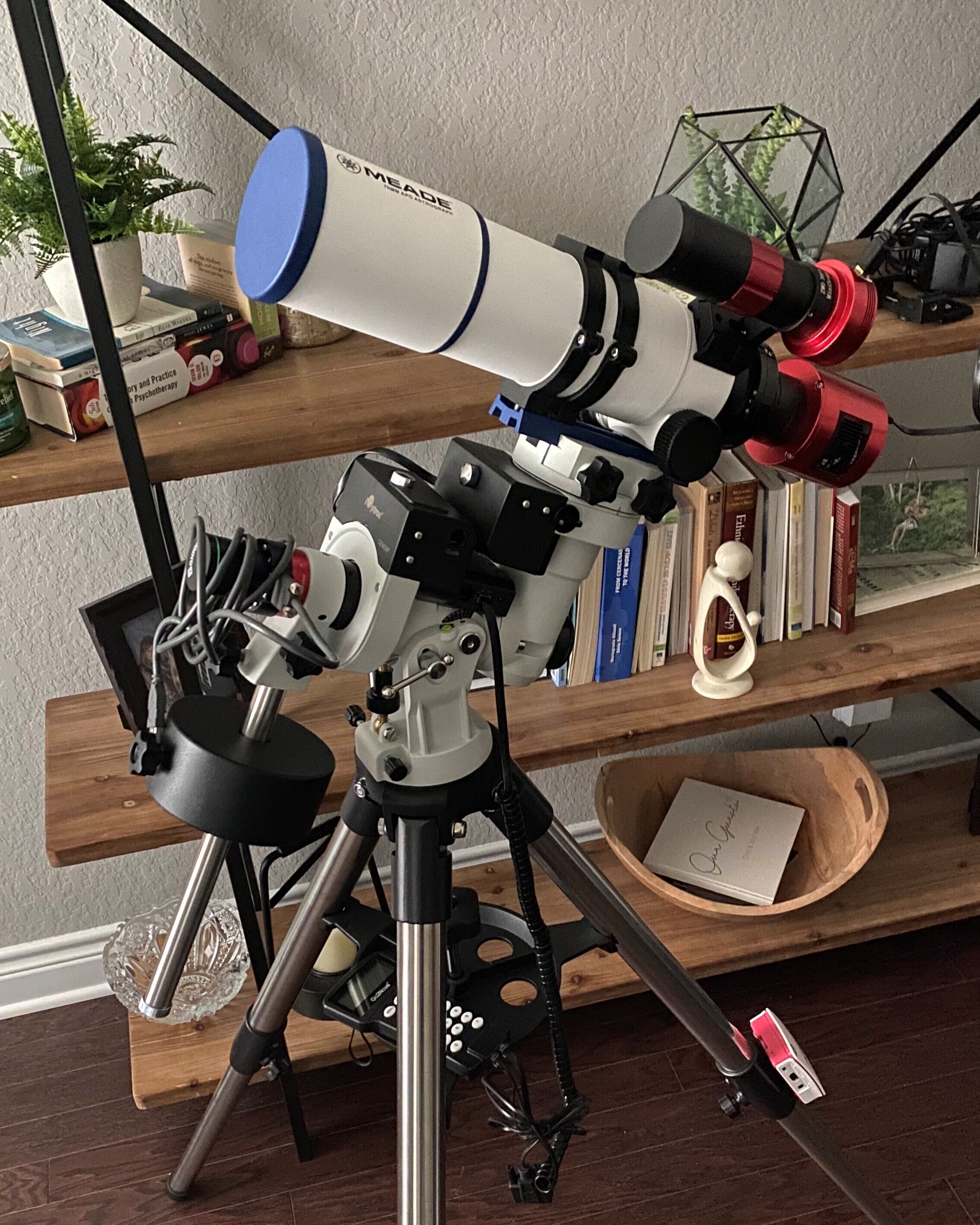I ended up buying a Meade 70mm 6000 apochromatic refractor. This scope has a 350mm focal length and shoots at f5. That’s not as fast as hyperstar but I was willing to give that up for a more portable set up. I put this on a ioptron cem25p mount which took me some getting use to over the celestron mount but I have come to really like it. I can easily carry this mount from inside my house out to my backyard and when Im done, I can just carry it right back inside and either leave it for the next time or break it down the next day. I am actually getting close to the same focal length that I had with the hyperstar. The images are sharper though on this set up in my opinion.
All in all, my point of this post is if you are like me (and I knew nothing about telescopes, mounts, or AP), depending on what you want to use it for, bigger is not always better. If I could do it over again, I would go with a smaller refractor for AP. It was way cheaper and better for my needs. On the flipside, I learned a lot and I now have 2 incredible scopes and mounts for all kinds of different applications. Only problem now is storing it all :)
NOTE: The Meade 6000 series of APO’s are not for visual viewing. ONLY AP! So if you were wanting to do visual and AP, a different type of small refractor might be better for you. There are plenty out there that can be used for both and might be more well rounded for a beginner.

